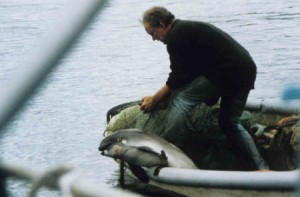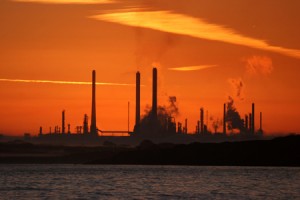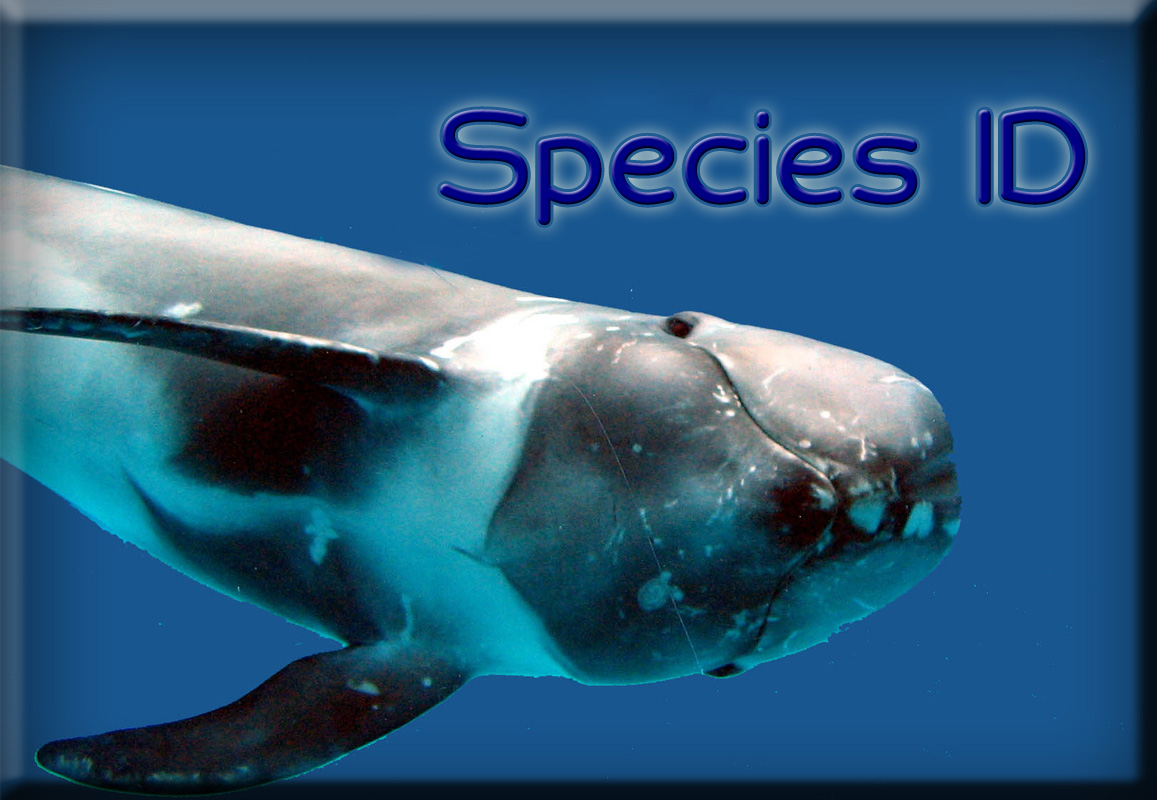At the start of a new millenium, we find that pressures upon whales and dolphins in UK waters are higher than they have ever been before.
-
Incidental Catches  Every year, more than ten thousand porpoises die in British waters, entangled in fishing gear, particularly bottom set gill nets. In 1993, an observer programme estimated that approximately 2,000 harbour porpoises were taken annually as by-catch in the Irish and UK bottom set gillnet fisheries for hake on the Celtic Shelf, to the southwest of Britain and Ireland. In 1993, an estimated 7,000 harbour porpoises were taken as a by-catch in the total Danish North Sea gillnet fleet.
Every year, more than ten thousand porpoises die in British waters, entangled in fishing gear, particularly bottom set gill nets. In 1993, an observer programme estimated that approximately 2,000 harbour porpoises were taken annually as by-catch in the Irish and UK bottom set gillnet fisheries for hake on the Celtic Shelf, to the southwest of Britain and Ireland. In 1993, an estimated 7,000 harbour porpoises were taken as a by-catch in the total Danish North Sea gillnet fleet.Large numbers of common dolphins also drown in trawl fisheries in the southwest of Britain. In particular, the bass fisheries in the Western Approaches to the English Channel pose a significant threat to the common dolphin population in the area. Between January and April 1992, at least 131 individuals were washed ashore in Cornwall and Devon. This amounts to 3-6 times the total number of common dolphins annually recorded throughout the UK in the previous two years. Post-mortems of serveral animals indicated that they had died from suffocation thought to be from net entanglement. In March 1997, more than six hundred dolphins of this species came ashore along the Atlantic coasts of France; most of those examined also showed signs of entanglement in fishing nets. During the 2003-04 fishing season in the Southwest, 169 common dolphins were recorded to have died in the bass fishery along with an additional mortality from other fisheries (WDCS/Greenpeace 2004).
-
Over fishing -
Pollution -
Disturbance -
Climate change -
Hunting




























